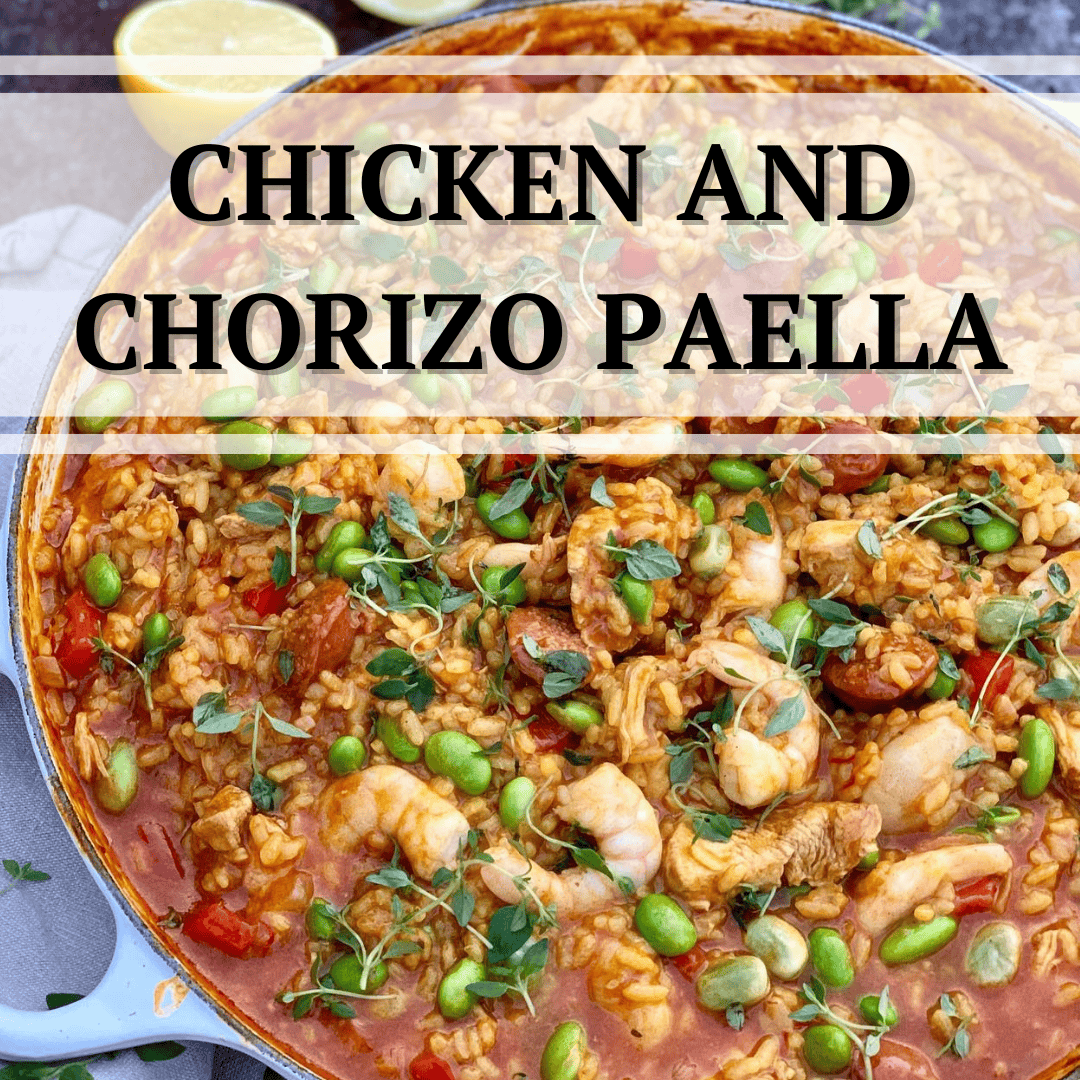For those of you who are allergic to seafood and won’t be able to enjoy my seafood paella, I’ve got you! This chicken and chorizo paella is hearty, full of flavor, and perfect for anyone who prefers something meatier.
It’s a one-pan wonder that’s big enough for sharing, yet simple enough for a weeknight dinner. Juicy chicken thighs, smoky chorizo, and fragrant rice all simmer together in a savory broth that soaks up every bit of flavor.
And if you’ve never made paella before, don’t worry, I’ll walk you through it step by step.
What Is Paella?
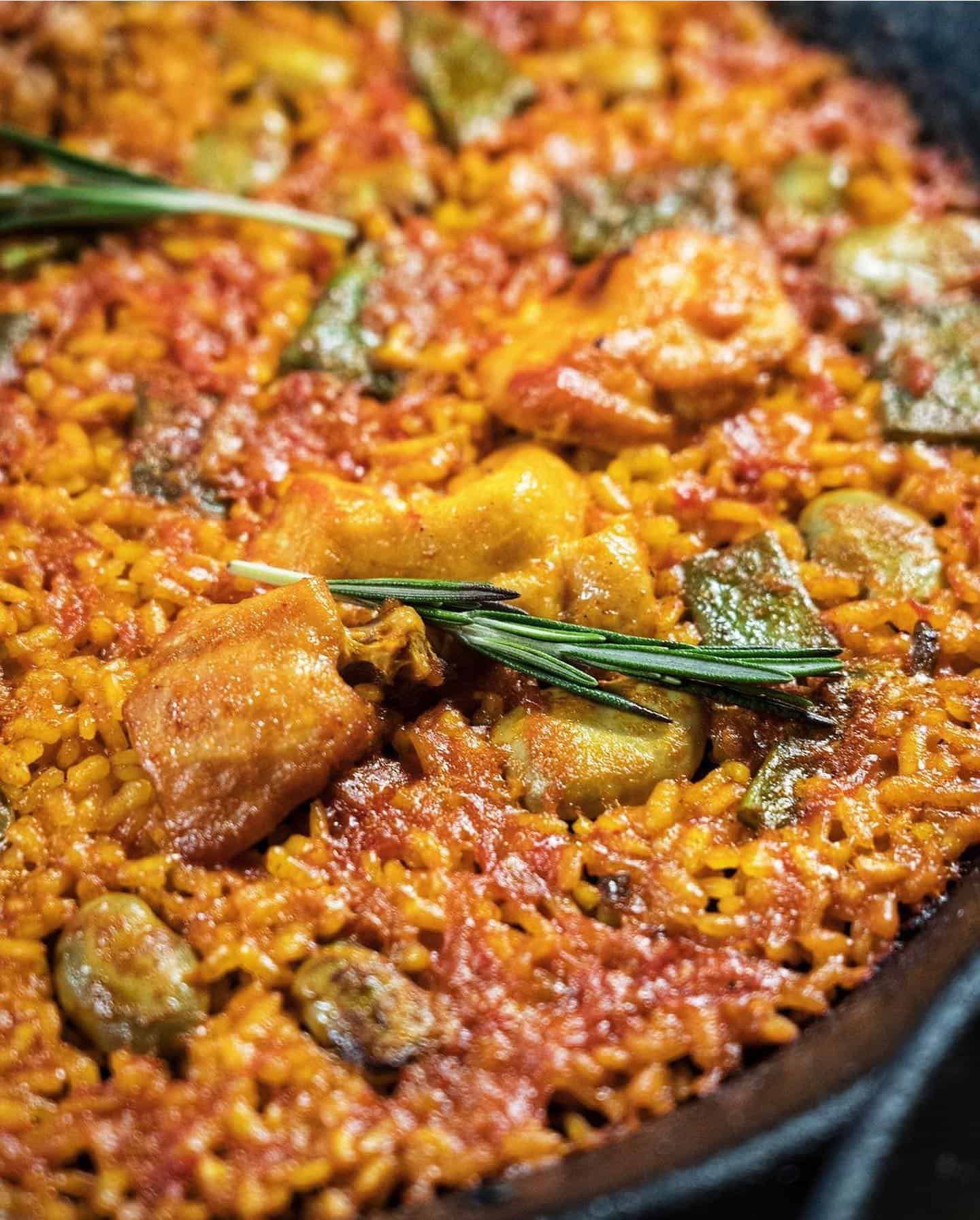
Paella is a traditional Spanish rice dish that originated in Valencia, cooked in a wide, shallow pan called a paellera. It’s known for its colorful presentation, rich flavor, and the signature crispy bottom layer of rice called socarrat.
Traditional versions include seafood, chicken, rabbit, or a mix of vegetables, but this chicken and chorizo combo is a favorite for home cooks because it’s bold, hearty, and easy to pull off without hunting down hard-to-find ingredients.
What Is Chorizo? Can I Use a Different Kind of Sausage?
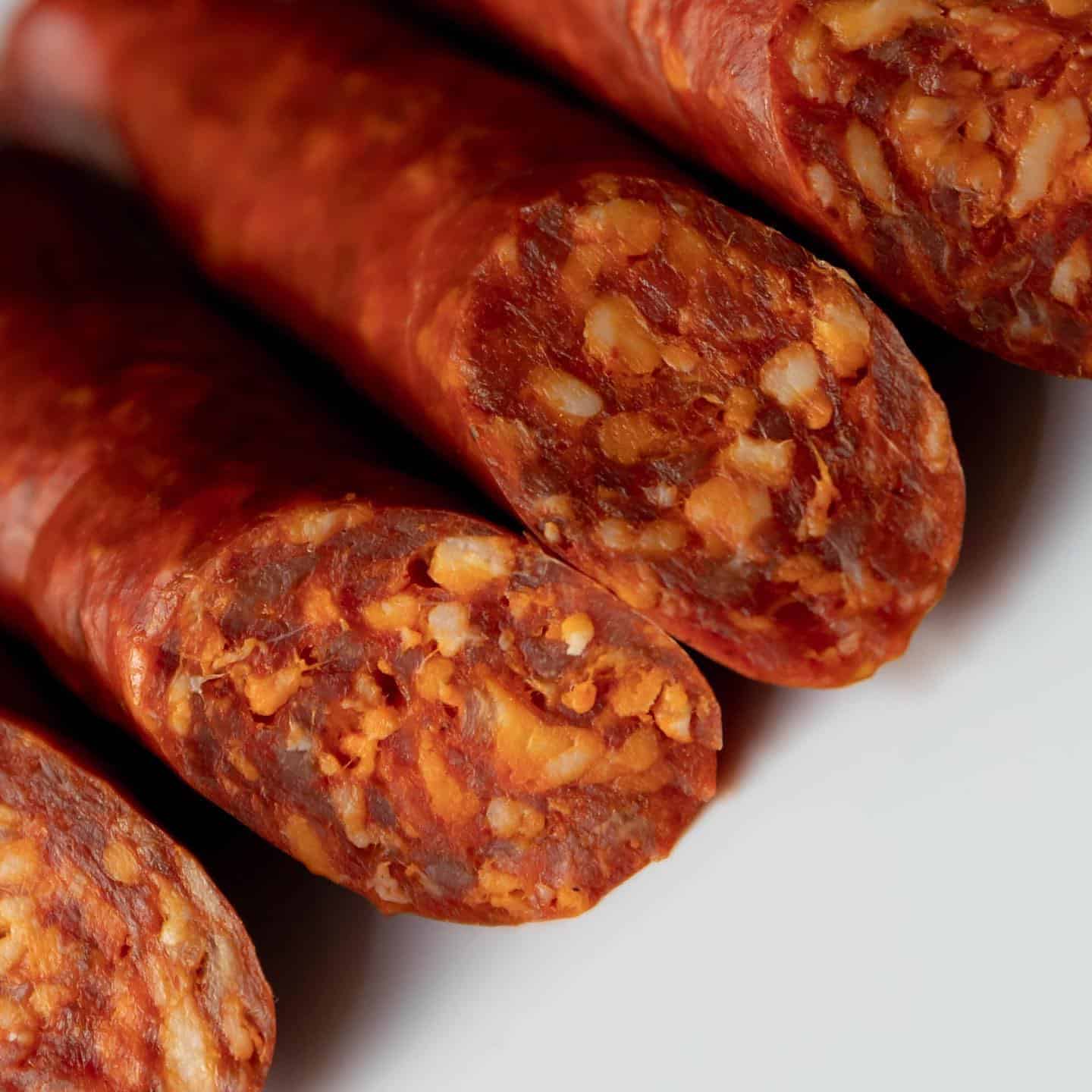
Chorizo is a spicy, smoky sausage that gives this paella its signature depth and warmth. There are two main types:
Spanish chorizo is cured and firm, like salami. It adds a smoky paprika flavor and fat to the rice as it cooks. Mexican chorizo is a fresh, ground sausage that needs to be cooked before eating; it’s spicier and more crumbly.
For paella, I recommend using Spanish chorizo because it browns beautifully, releases flavorful oils, and complements the saffron rice perfectly.
If you can’t find chorizo, you can substitute it with smoked sausage, andouille, or even linguiça. Just make sure it’s smoky and well-seasoned so it gives the same depth of flavor.
Is Saffron Essential?
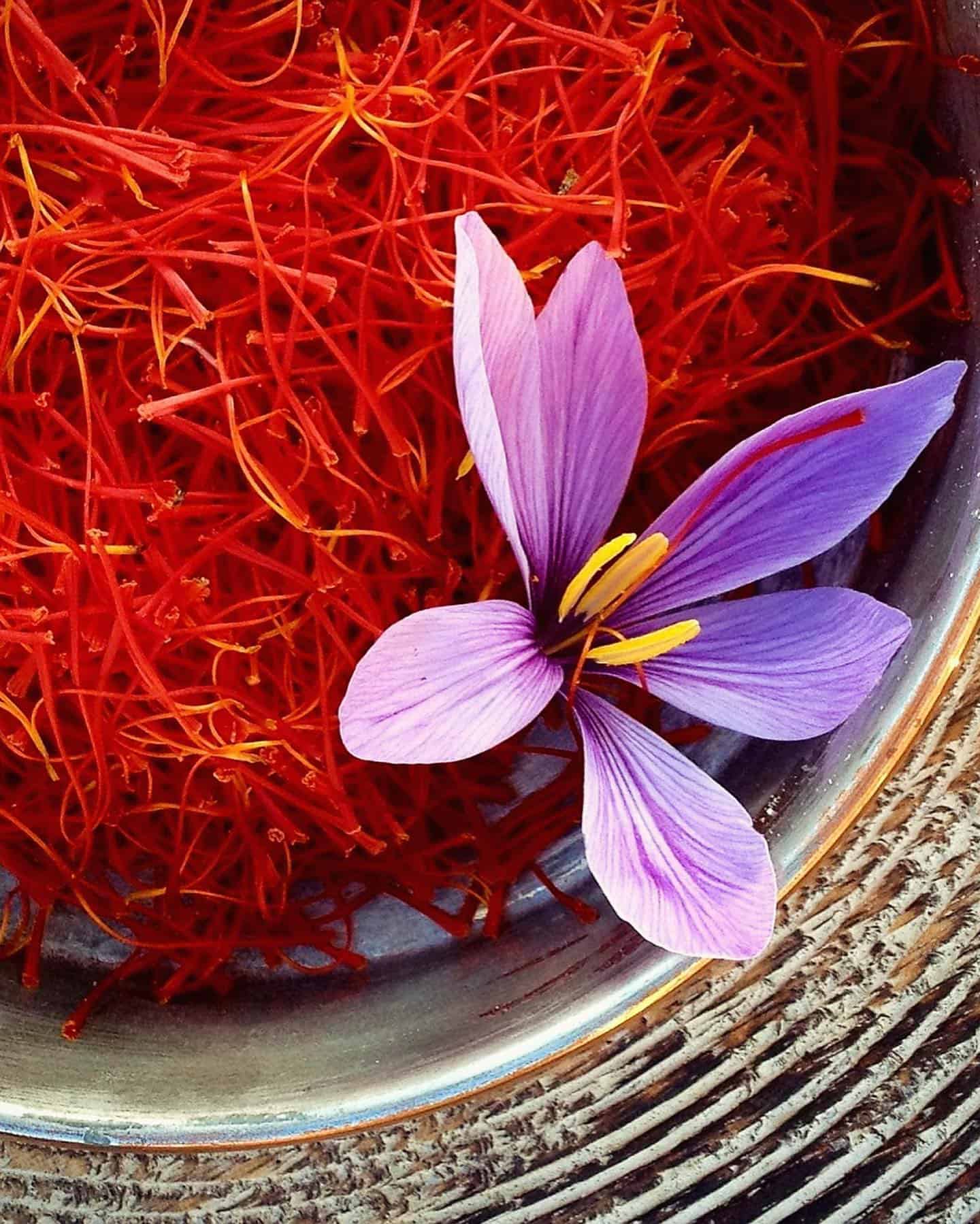
Saffron is what gives paella its iconic golden hue and subtle floral aroma. It’s part of the soul of traditional paella. However, it’s also one of the most expensive spices in the world. If you’re cooking on a budget, don’t worry, you can absolutely still make delicious paella without it.
I sometimes use kasubha (safflower), a local alternative in Filipino kitchens. It mimics saffron’s color (though not the exact flavor) and is a great substitute for everyday cooking.
You can also use a pinch of turmeric for color or combine turmeric with smoked paprika for a warmer, more complex taste.
If you do have saffron, bloom it in a few tablespoons of warm broth or water for 10 minutes before adding it, as this helps release the color and aroma more evenly.
What Kind of Rice to Use
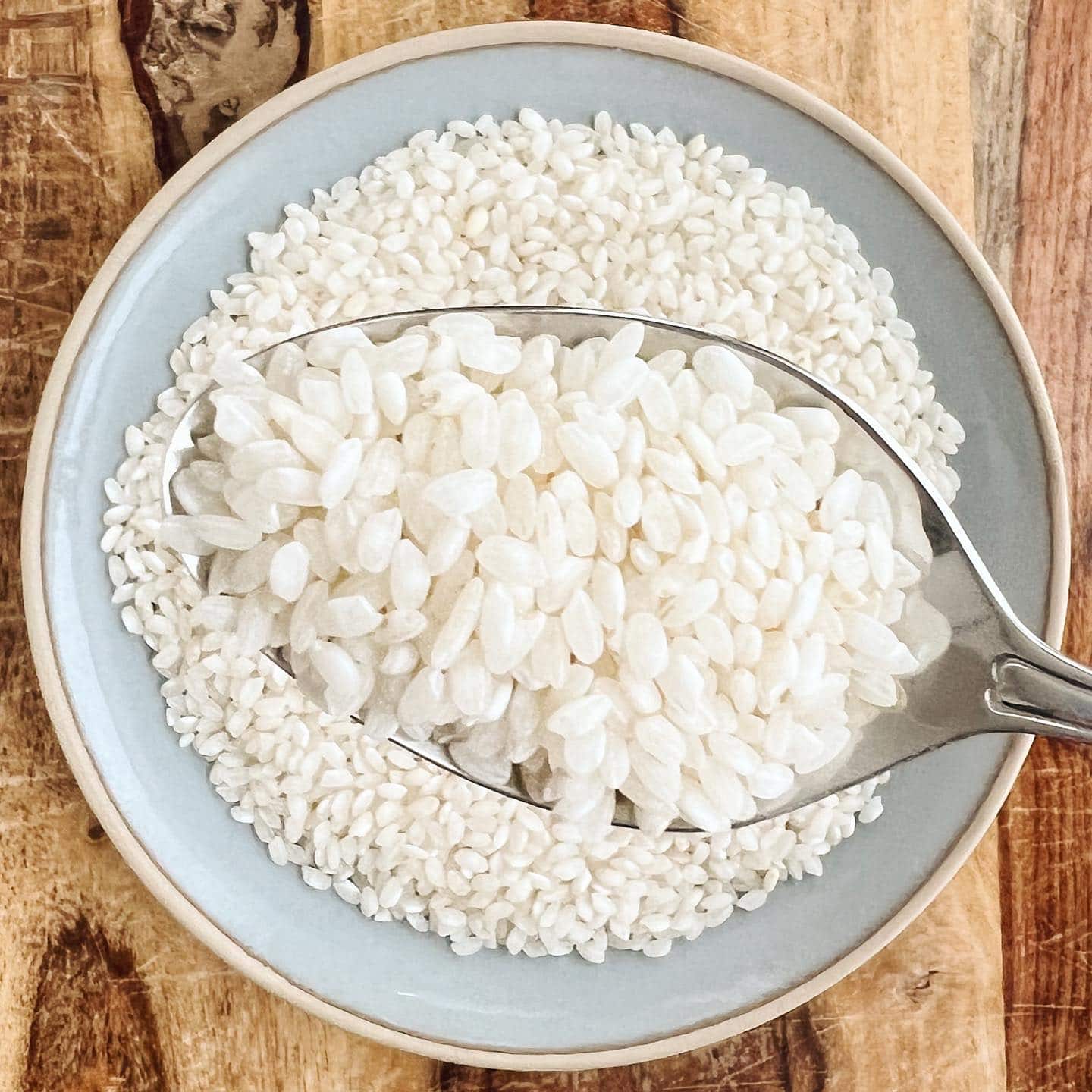
The rice makes or breaks a paella. You want something that absorbs liquid well but still holds its shape—short-grain rice is ideal.
Bomba rice or calasparra rice are the traditional Spanish choices. If those aren’t available, arborio rice (commonly used for risotto) works beautifully, too.
Avoid long-grain rice like jasmine or basmati because they don’t absorb flavor the same way and tend to turn fluffy rather than creamy.
Here’s my rule: the rice should be tender but not mushy, and the grains should glisten with the flavorful broth by the end of cooking.
My Tips for Cooking Perfect Paella
If this is your first time making paella, here are some things I always do to make sure it turns out flavorful and perfectly textured:
When cooking the chorizo and chicken, brown them well—don’t rush this step. You want those golden bits sticking to the pan (called fond) because they’ll flavor the rice later.
Once you add your rice and spices, toast them in the pan for a minute or two. This helps coat the rice with oil and locks in flavor before adding the broth.
When you pour in your stock, don’t stir too much. Remember, paella isn’t like risotto. You want the rice to stay mostly undisturbed so it forms that signature crispy bottom layer.
And finally, resist the urge to cover the pan. Paella needs to cook uncovered so the liquid reduces evenly and the rice develops texture instead of steaming.
Easy Chicken and Chorizo Paella Recipe
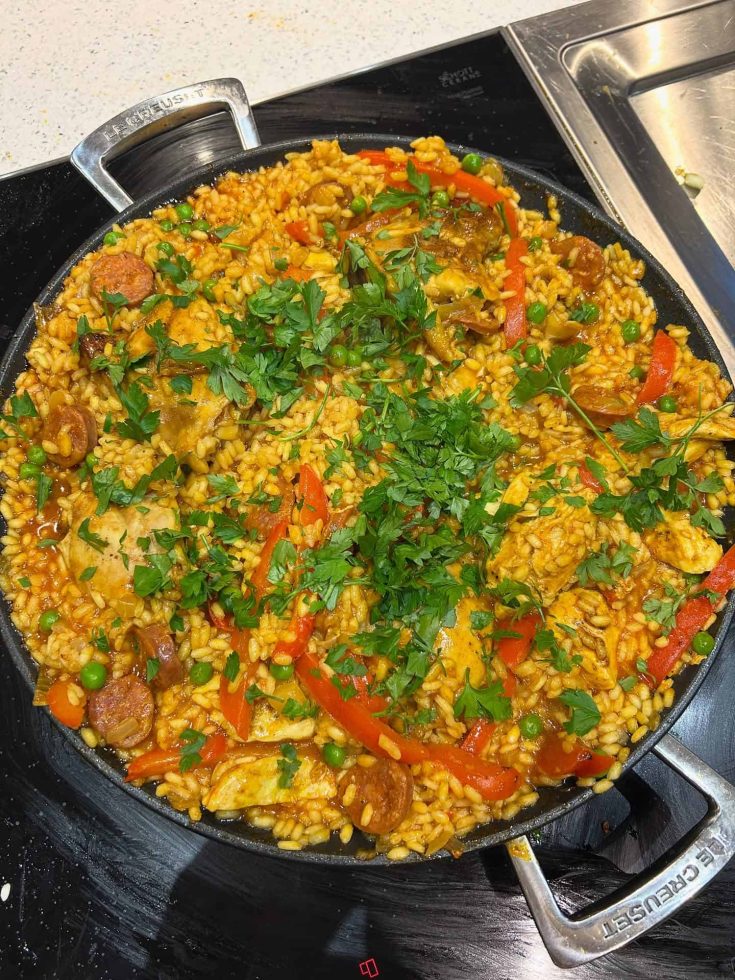
Image credit: @thejerseyblogger
Ingredients
For the Paella
- 2 tablespoons olive oil
- 1 onion, finely chopped
- 3 cloves garlic, minced
- 1 red bell pepper, diced
- 200g (7 oz) Spanish chorizo, sliced
- 4 bone-in chicken thighs
- 1 ½ cups short-grain rice (bomba, calasparra, or arborio)
- ½ teaspoon smoked paprika
- Pinch of saffron threads (or ½ teaspoon kasubha or turmeric)
- 3 cups chicken broth or stock
- ½ cup diced tomatoes (canned or fresh)
- Salt and pepper, to taste
Optional Garnish
- Lemon wedges
- Chopped parsley
Instructions
- Brown the meats. Heat olive oil in a large paella pan or wide skillet over medium heat. Sear the chicken thighs until golden brown on both sides, about 5 minutes per side. Remove and set aside.
- Cook the chorizo. In the same pan, add the sliced chorizo and cook for 2–3 minutes until it releases its oils and turns slightly crisp. Remove and set aside with the chicken.
- Sauté aromatics. In the same pan, add onion, garlic, and bell pepper. Sauté for 2–3 minutes until softened and fragrant.
- Toast the rice. Stir in the rice, smoked paprika, and saffron (or kasubha/turmeric). Toast for 1 minute, coating the rice evenly in oil and spices.
- Simmer. Pour in the broth and diced tomatoes. Add the chicken and chorizo back to the pan. Bring to a boil, then reduce the heat to low and simmer uncovered for 20–25 minutes. Don’t stir too much, just tilt the pan occasionally to distribute the liquid.
- Add peas. If using, scatter peas over the top during the last 5 minutes of cooking.
- Rest and serve. Once the rice is tender and the liquid is mostly absorbed, remove from heat. Cover with a clean towel and let rest for 5 minutes. Garnish with parsley and lemon wedges before serving.
Featured image credit: @annasfamilykitchen

